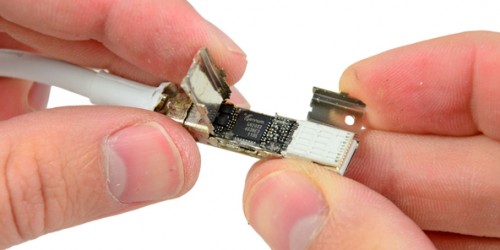One of the main criticisms of the Thunderbolt connectivity standard since it’s introduction by Apple has been its cost. The prices of compatible peripherals is still high, and even the cables are expensive, with Apple’s 2-meter cable costing $49. Some upcoming advances could help the cost come down later this year, or early next year.
In a report published earlier this week, Ars Technica took a look at why the cables are so expensive and investigated some of the upcoming advances that could help bring prices down beginning late this year or early next year.
Apple’s Thunderbolt cable is expensive because it contains a number of chips and other circuitry. The chip is built using silicon germanium, “an expensive semiconductor process typically used for telecom applications,” says Intersil marketing manager John Mitchell.
MacRumors: “In addition to the transceiver, the current reference design also requires a separate microcontroller, as well as power management and voltage regulation chips to deliver the 3V data signals and 15V optional power supply for bus-powered devices. Essentially, there are four integrated circuits (IC) at either end of a Thunderbolt cable.”
Intersil seems ready to simplify the design of Thunderbolt circuitry later this year with its own line of products that will reduce the number of chips used, and will also allow for cheaper cable to be used.
Their solution combines the microcontroller and transceiver into a single signal processing chip, and combines power management and voltage regulators into a single power management chip. Cutting the number of required ICs from four to two.
Combined with other improvements, Intersil’s solution should yield significant cost savings for consumers.



